Solar Energy Solutions for Healthcare in Rural Areas of Developing Countries: Technologies, Challenges, and Opportunities
Abstract
1. Introduction
Methodology
2. Solar Energy Technologies
2.1. Solar Photovoltaic Energy Technology
2.2. Solar Thermal Energy Technology
3. Energy Storage Technologies
4. Challenges of Energy Access in Rural Healthcare Systems
5. Successful Solar Energy Implementations in Rural Healthcare
6. Conclusions
Author Contributions
Funding
Data Availability Statement
Conflicts of Interest
Abbreviations
| CPC | Compound Parabolic Collector |
| IEA | International Energy Agency |
| LIB | Lithium-Ion Battery |
| PCM | Phase Change Material |
| PTC | Parabolic Trough Collector |
| PV | Photovoltaic |
| SDG | Sustainable Development Goal |
| STES | Solar Thermal Energy Storage |
| SWH | Solar Water Heating |
References
- Bond, T.C.; Sun, K. Can reducing black carbon emissions counteract global warming? Environ. Sci. Technol. 2005, 39, 5921–5926. [Google Scholar] [CrossRef] [PubMed]
- Almeshqab, F.; Ustun, T.S. Lessons learned from rural electrification initiatives in developing countries: Insights for technical, social, financial and public policy aspects. Renew. Sustain. Energy Rev. 2019, 102, 35–53. [Google Scholar] [CrossRef]
- World Health Statistics 2023: Monitoring Health for the SDGs, Sustainable Development Goals. Available online: https://www.who.int/publications/i/item/9789240074323 (accessed on 13 May 2025).
- Adair-Rohani, H.; Zukor, K.; Bonjour, S.; Wilburn, S.; Kuesel, A.C.; Hebert, R.; Fletcher, E.R. Limited Electricity Access in Health Facilities of Sub-Saharan Africa: A Systematic Review of Data on Electricity Access, Sources, and Reliability. Glob. Health Sci. Pract. 2013, 1, 249–261. [Google Scholar] [CrossRef] [PubMed]
- Kolosok, S.; Myroshnychenko, I.; Mishenina, H.; Yarova, I. Renewable energy innovation in Europe: Energy efficiency analysis. E3S Web Conf. 2021, 234, 21. [Google Scholar] [CrossRef]
- Zahedi, R.; Zahedi, A.; Ahmadi, A. Strategic Study for Renewable Energy Policy, Optimizations and Sustainability in Iran. Sustainability 2022, 14, 2418. [Google Scholar] [CrossRef]
- Sharma, L.; Singh, J.; Dhiman, R.; Nunez, D.R.V.; Ba, A.E.; Joshi, K.J.; Modi, B.; Padhi, A.; Tandon, J.K.; Seidel, M. Advancing Solar Energy for Primary Healthcare in Developing Nations: Addressing Current Challenges and Enabling Progress Through UNICEF and Collaborative Partnerships. Cureus 2024, 16, e51571. [Google Scholar] [CrossRef] [PubMed]
- Kraus, S.; Breier, M.; Dasí-Rodríguez, S. The art of crafting a systematic literature review in entrepreneurship research. Int. Entrep. Manag. J. 2020, 16, 1023–1042. [Google Scholar] [CrossRef]
- Jamar, A.; Majid, Z.A.A.; Azmi, W.H.; Norhafana, M.; Razak, A.A. A review of water heating system for solar energy applications. Int. Commun. Heat Mass Transf. 2016, 76, 178–187. [Google Scholar] [CrossRef]
- Kristiawan, H.; Kumara, I.N.S.; Giriantari, I.A.D. Potensi Pembangkit Listrik Tenaga Surya Atap Gedung Sekolah di Kota Denpasar. J. Spektr. 2019, 6, 66. [Google Scholar] [CrossRef]
- El Hammoumi, A.; Chtita, S.; Motahhir, S.; El Ghzizal, A. Solar PV energy: From material to use, and the most commonly used techniques to maximize the power output of PV systems: A focus on solar trackers and floating solar panels. Energy Rep. 2022, 8, 11992–12010. [Google Scholar] [CrossRef]
- Hassoune, H.; Zohra, M.B.; Riad, A.; Alhamanyi, A. Improving electrical energy and producing thermal energy in solar photovoltaic system by integrating phase change materials. E3S Web Conf. 2021, 297, 01021. [Google Scholar] [CrossRef]
- Nkele, A.; Ikhioya, I.; Chime, C.; Ezema, F. Improving the Performance of Solar Thermal Energy Storage Systems. J. Energy Power Technol. 2023, 5, 24. [Google Scholar] [CrossRef]
- Huang, G.; Tang, Y.; Chen, X.; Chen, M.; Jiang, Y. A Comprehensive Review of Floating Solar Plants and Potentials for Offshore Applications. J. Mar. Sci. Eng. 2023, 11, 2064. [Google Scholar] [CrossRef]
- Muñiz, R.; del Coso, R.; Nuño, F.; Villegas, P.J.; Álvarez, D.; Martínez, J.A. Solar-Powered Smart Buildings: Integrated Energy Management Solution for IoT-Enabled Sustainability. Electronics 2024, 13, 317. [Google Scholar] [CrossRef]
- De Almeida, A.T.; Moura, P.S. Off-grid appliances and smart controls for energy access. Energy Effic. 2020, 13, 193–195. [Google Scholar] [CrossRef]
- Bello, R.; Suleiman, T.; Kende, U.A.; Abulrasheed, M. Design Analysis of 7.5KW Stand Alone Solar Photovoltaic Power System for an Intermediate Household. Asian J. Res. Rev. Phys. 2021, 5, 18–25. [Google Scholar] [CrossRef]
- Ngonda, T.; Nkhoma, R.; Ngonda, V. Perceptions of Solar Photovoltaic System Adopters in Sub-Saharan Africa: A Case of Adopters in Ntchisi, Malawi. Energies 2023, 16, 7350. [Google Scholar] [CrossRef]
- Nabaweesi, J.; Kabuye, F.; Adaramola, M.S. Households’ willingness to adopt solar energy for business use in Uganda. Int. J. Energy Sect. Manag. 2024, 18, 26–42. [Google Scholar] [CrossRef]
- Emon, M.M.H. Unveiling the Progression Towards Solar Power Adoption: A Comprehensive Analysis of Understanding, Awareness, and Acceptance of Solar Technology in Bangladesh. Econ. Growth Environ. Sustain. 2023, 2, 105–111. [Google Scholar] [CrossRef]
- Setyowati, A.B. Mitigating energy poverty: Mobilizing climate finance to manage the energy trilemma in Indonesia. Sustainability 2020, 12, 1603. [Google Scholar] [CrossRef]
- Raymond, J.; Kihedu, J.H.; Kimambo, C.Z.M. A Model for Sustainable Adoption of Solar Photovoltaic Technology in Tanzania. Tanzan. J. Eng. Technol. 2022, 41, 16–34. [Google Scholar] [CrossRef]
- Harmen, M.; Julai, N.; Othman, A.K.; Aznan, H.; Kulanthaivel, G. Techno-economic Analysis of a Stand-alone Photovoltaic-Diesel Hybrid System for Rural Area in Sarawak. Int. J. Integr. Eng. 2020, 12, 137–147. [Google Scholar] [CrossRef]
- Jing, K.T.; Qing, C.T.; Yee, H.C. Readiness of Malaysian on Sustainable Development in Solar Energy Application. Int. J. Sustain. Constr. Eng. Technol. 2023, 14, 189–201. [Google Scholar] [CrossRef]
- Irfan, M.; Zhao, Z.Y.; Ahmad, M.; Rehman, A. A techno-economic analysis of off-grid solar PV system: A case study for Punjab Province in Pakistan. Processes 2019, 7, 708. [Google Scholar] [CrossRef]
- Kumar, V.; Syan, A.S.; Kaur, A.; Hundal, B.S. Determinants of farmers’ decision to adopt solar powered pumps. Int. J. Energy Sect. Manag. 2020, 14, 707–727. [Google Scholar] [CrossRef]
- Woldegiyorgis, T.A. Analysis of Solar PV Energy Systems for Rural Villages of Nekemte Area, Oromiya Region, Ethiopia. J. Mod. Mater. 2019, 6, 13–22. [Google Scholar] [CrossRef]
- Santos, M.M.; Ferreira, A.T.V.; Lanzinha, J.C.G. Overview of Energy Systems in Africa: A Comprehensive Review. Solar 2023, 3, 638–649. [Google Scholar] [CrossRef]
- Batool, K.; Zhao, Z.Y.; Atif, F.; Dilanchiev, A. Nexus Between Energy Poverty and Technological Innovations: A Pathway for Addressing Energy Sustainability. Front. Environ. Sci. 2022, 10, 888080. [Google Scholar] [CrossRef]
- Kapuria, B.; Hamadeh, R.S.; Mazloum, F.; Korbane, J.A.; Aung, K.; Kamal, D.; Chamoun, N.; Syed, S. Achieving sustainable, environmentally viable, solarized vaccine cold chain system and vaccination program—An effort to move towards clean and green energy-driven primary healthcare in Lebanon. Front. Health Serv. 2024, 4, 1386432. [Google Scholar] [CrossRef] [PubMed]
- Agoundedemba, M.; Kim, C.K.; Kim, H.G. Energy Status in Africa: Challenges, Progress and Sustainable Pathways. Energies 2023, 16, 7708. [Google Scholar] [CrossRef]
- Rugaimukamu, K.; Shauri, N.E.; Mazigwa, R.C. The Political Economy Analysis of Institutional Barriers to Rural Electrification in Tanzania. Open J. Soc. Sci. 2023, 11, 275–310. [Google Scholar] [CrossRef]
- Rokicki, S.; Mwesigwa, B.; Waiswa, P.; Cohen, J. Impact of Solar Light and Electricity on the Quality and Timeliness of Maternity Care: A Stepped-Wedge Cluster-Randomized Trial in Uganda. Glob. Health Sci. Pract. 2018, 9, 777–792. [Google Scholar] [CrossRef] [PubMed]
- Shoeibi, S.; Kargarsharifabad, H.; Rahbar, N.; Khosravi, G.; Sharifpur, M. An integrated solar desalination with evacuated tube heat pipe solar collector and new wind ventilator external condenser. Sustain. Energy Technol. Assess. 2022, 50, 101857. [Google Scholar] [CrossRef]
- Kumar, K.R.; Chaitanya, N.V.V.K.; Kumar, N.S. Solar thermal energy technologies and its applications for process heating and power generation—A review. J. Clean. Prod. 2021, 282, 125296. [Google Scholar] [CrossRef]
- Chavan, S.; Rudrapati, R.; Manickam, S. A comprehensive review on current advances of thermal energy storage and its applications. Alex. Eng. J. 2022, 61, 5455–5463. [Google Scholar] [CrossRef]
- Zhao, R.; Zhao, L.; Deng, S.; Zheng, N. Trends in patents for solar thermal utilization in China. Renew. Sustain. Energy Rev. 2015, 52, 852–862. [Google Scholar] [CrossRef]
- Carrillo, A.J.; Bayon, A.; Coronado, J.M.; Mastronardo, E. Editorial: Recent Advances in Solar-Driven Thermochemical Fuel Production and Thermal Energy Storage. Front. Energy Res. 2022, 10, 885894. [Google Scholar] [CrossRef]
- Kalogirou, S. The potential of solar industrial process heat applications. Appl. Energy 2003, 76, 337–361. [Google Scholar] [CrossRef]
- Suman, S.; Khan, M.K.; Pathak, M. Performance enhancement of solar collectors—A review. Renew. Sustain. Energy. Rev. 2015, 49, 192–210. [Google Scholar] [CrossRef]
- Mustafa, J.; Alqaed, S.; Kalbasi, R. Challenging of using CuO nanoparticles in a flat plate solar collector- Energy saving in a solar-assisted hot process stream. J. Taiwan Inst. Chem. Eng. 2021, 124, 258–265. [Google Scholar] [CrossRef]
- Naik, B.K.; Muthukumar, P. Performance assessment of evacuated U-tube solar collector: A numerical study. Sādhanā 2019, 44, 23. [Google Scholar] [CrossRef]
- Selvakumar, P.; Somasundaram, P.; Tamilvanan, A.; Karthikeyan, R.; Rajagopal, T. Performance of P1 model in the prediction of static temperature and velocity magnitude of therminol D-12 in an evacuated tube solar collector. Int. J. Innov. Technol. Explor. Eng. 2019, 8, 255–261. [Google Scholar] [CrossRef]
- Maraj, A.; Londo, A.; Firat, C.; Gebremedhin, A. Comparison of the energy performance between flat-plate and heat pipe evacuated tube collectors for solar water heating systems under mediterranean climate conditions. J. Sustain. Dev. Energy Water Environ. Syst. 2019, 7, 87–100. [Google Scholar] [CrossRef]
- Yurchenko, V.; Yurchenko, E.; Çiydem, M.; Totuk, O. Ray tracing for optimization of compound parabolic concentrators for solar collectors of enclosed design. Turk. J. Electr. Eng. Comput. Sci. 2015, 23, 1761–1768. [Google Scholar] [CrossRef]
- Riaz, H.; Ali, M.; Akhtar, J.; Muhammad, R.; Kaleem, M. Comparative Optical and Thermal Analysis of Compound Parabolic Solar Collector with Fixed and Variable Concentration Ratio. Eng. Proc. 2022, 12, 85. [Google Scholar] [CrossRef]
- Berwal, S.; Khatri, N.; Kim, D. Fresnel lens-based solar concentrators. Women Opt. Photonics India 2023, 12638, 12–14. [Google Scholar] [CrossRef]
- Asrori, A.; Udianto, P.; Faizal, E.; Rizza, M.A.; Witono, K.; Perdana, D. The Potential of Steam Generating by the PMMA Fresnel Lens Concentrator for Indoor Solar Cooker Application. Period. Polytech. Mech. Eng. 2024, 68, 120–129. [Google Scholar] [CrossRef]
- Asrori, A.; Suparman, S.; Wahyudi, S.; Widhiyanuriyawan, D. An Experimental Study of Solar Cooker Performance with Thermal Concentrator System by Spot Fresnel Lens. East.-Eur. J. Enterp. Technol. 2020, 5, 31–41. [Google Scholar] [CrossRef]
- Pandi, K.; Venkatachalapathy, S.; Suresh, S. Experimental investigation on low concentration nanofluids with Fresnel lens and evacuated tubes for solar applications. Int. J. Appl. Ceram. Technol. 2022, 19, 2236–2248. [Google Scholar] [CrossRef]
- Cruz, N.C.; Salhi, S.; Redondo, J.L.; Álvarez, J.D.; Berenguel, M.; Ortigosa, P.M. Design of a parallel genetic algorithm for continuous and pattern-free heliostat field optimization. J. Supercomput. 2019, 75, 1268–1283. [Google Scholar] [CrossRef]
- Subramani, J.; Nagarajan, P.K.; Subramaniyan, C.; Anbuselvan, N. Performance studies on solar parabolic dish collector using conical cavity receiver for community heating applications. Mater. Today Proc. 2021, 45, 1862–1866. [Google Scholar] [CrossRef]
- Hamada, M.A.; Ehab, A.; Khalil, H.; Al-sood, M.M.A.; Kandeal, A.W.; Sharshir, S. Factors affecting the performance enhancement of a parabolic trough collector utilizing mono and hybrid nanofluids: A mini review of recent progress and prospects. J. Contemp. Technol. Appl. Eng. 2022, 1, 49–61. [Google Scholar] [CrossRef]
- Wang, Q.; Shen, B.; Huang, J.; Yang, H.; Pei, G.; Yang, H. A spectral self-regulating parabolic trough solar receiver integrated with vanadium dioxide-based thermochromic coating. Appl. Energy 2021, 285, 116453. [Google Scholar] [CrossRef]
- Natraj; Reddy, K.S.; Rao, B.N. Investigation of Variable Wind Loads and Shape Accuracy of Reflectors in Parabolic Trough Collector. ASPS Conf. Proc. 2022, 1, 1495–1504. [Google Scholar] [CrossRef]
- Li, W.; Bu, F.; Shi, G.; Yuan, B.; Zhao, Y. Planning and design of an architectural energy supply system based on photovoltaic-thermal technology. J. Phys. Conf. Ser. 2024, 2757, 012007. [Google Scholar] [CrossRef]
- Hasan, M.M.; Hossain, S.; Mofijur, M.; Kabir, Z.; Badruddin, I.A.; Yunus Khan, T.M.; Jassim, E. Harnessing Solar Power: A Review of Photovoltaic Innovations, Solar Thermal Systems, and the Dawn of Energy Storage Solutions. Energies 2023, 16, 6456. [Google Scholar] [CrossRef]
- Barbu, M.; Siroux, M.; Darie, G. Performance Analysis and Comparison of an Experimental Hybrid PV, PVT and Solar Thermal System Installed in a Preschool in Bucharest, Romania. Energies 2023, 16, 5321. [Google Scholar] [CrossRef]
- Aguilar-Jiménez, J.A.; Velázquez-Limón, N.; Islas-Pereda, S.; Ríos-Arriola, J.; Suástegui-Macias, J.A.; Cásares-De la Torre, C.A.; Gómez-Hernandez, J.A. Technical and economic assessment of hybrid PVT solar systems compared to independent solar thermal and photovoltaic collectors in high-temperature zones: A case study in Mexicali, Mexico. Renew. Energy 2024, 2, 27533735241278104. [Google Scholar] [CrossRef]
- Okoye, C.O.; Oranekwu-Okoye, B.C. Economic feasibility of solar PV system for rural electrification in Sub-Sahara Africa. Renew. Sustain. Energy Rev. 2018, 82, 2537–2547. [Google Scholar] [CrossRef]
- Wu, T.; Wang, J.W.; Qu, S.; Mi, Z.; Wei, Y.M. Frontiers of Energy Storage Technologies. Int. J. Energy Res. 2023, 2023, 7138669. [Google Scholar] [CrossRef]
- Song, F.; Bai, L.; Moysiadou, A.; Lee, S.; Hu, C.; Liardet, L.; Hu, X. Transition Metal Oxides as Electrocatalysts for the Oxygen Evolution Reaction in Alkaline Solutions: An Application-Inspired Renaissance. J. Am. Chem. Soc. 2018, 140, 7748–7759. [Google Scholar] [CrossRef] [PubMed]
- Yao, L.; Yang, B.; Cui, H.; Zhuang, J.; Ye, J.; Xue, J. Challenges and progresses of energy storage technology and its application in power systems. J. Mod. Power Syst. Clean Energy 2016, 4, 519–528. [Google Scholar] [CrossRef]
- Mongird, K.; Viswanathan, V.; Balducci, P.; Alam, J.; Fotedar, V.; Koritarov, V.; Hadjerioua, B. An evaluation of energy storage cost and performance characteristics. Energies 2020, 13, 3307. [Google Scholar] [CrossRef]
- Wang, P.; Yang, X.; Zhang, Q. Physical Energy Storage Technologies: Basic Principles, Parameters and Applications. Highlights Sci. Eng. Technol. 2022, 3, 73–84. [Google Scholar] [CrossRef]
- Chen, S.; Xie, J. Application Prospect Analysis of Molten Salt Energy Storage Technology. Highlights Sci. Eng. Technol. 2022, 26, 46–51. [Google Scholar] [CrossRef]
- Wang, Q.; Tan, Z.; De, G.; Pu, L.; Wu, J. Research on promotion incentive policy and mechanism simulation model of energy storage technology. Energy Sci. Eng. 2019, 7, 3147–3159. [Google Scholar] [CrossRef]
- Choudhary, S.; Sumita, S.; Kumar, M.; Bairwa, S.; Soni, N. A Comprehensive Review on Enhancing Heat Transfer Rate and Innovation Design of a Heat Exchanger with Phase Change Material for Storing Solar Thermal Energy. Int. J. Res. Publ. Rev. 2024, 5, 3083–3086. [Google Scholar] [CrossRef]
- Fan, D.; Meng, Y.; Jiang, Y.; Qian, S.; Liu, J.; Xu, Y.; Xiong, D.; Cao, Y. Silver/polypyrrole-functionalized polyurethane foam embedded phase change materials for thermal energy harvesting. Nanomaterials 2021, 11, 3011. [Google Scholar] [CrossRef] [PubMed]
- Mogensen, J.; Christensen, O.; Kilde, M.D.; Abildgaard, M.; Metz, L.; Kadziola, A.; Jevric, M.; Mikkelsen, K.V.; Nielsen, M.B. Molecular Solar Thermal Energy Storage Systems with Long Discharge Times Based on the Dihydroazulene/Vinylheptafulvene Couple. Eur. J. Org. 2019, 2019, 1986–1993. [Google Scholar] [CrossRef]
- Pachori, H.; Choudhary, T.; Sheorey, T. Significance of thermal energy storage material in solar air heaters. Mater. Today Proc. 2022, 56, 126–134. [Google Scholar] [CrossRef]
- Li, Z.; Xu, M.; Huai, X.; Huang, C.; Wang, K. Simulation and analysis of thermochemical seasonal solar energy storage for district heating applications in China. Int. J. Energy Res. 2021, 45, 7093–7107. [Google Scholar] [CrossRef]
- Chen, T.; Jin, Y.; Lv, H.; Yang, A.; Liu, M.; Chen, B.; Xie, Y.; Chen, Q. Applications of Lithium-Ion Batteries in Grid-Scale Energy Storage Systems. Transact. Tianjin Univ. 2020, 26, 208–217. [Google Scholar] [CrossRef]
- Puranik, S.; Hoffmann, M.M.; Farrukh, F.; Sharma, S. Optimal investments into rooftop solar and batteries for a distribution grid company and prosumers: A case study in India. In Proceedings of the 2022 IEEE 7th International Energy Conference (ENERGYCON), Riga, Latvia, 9–12 May 2022. [Google Scholar] [CrossRef]
- Dorel, S.; Osman, M.G.; Strejoiu, C.V.; Lazaroiu, G. Exploring Optimal Charging Strategies for Off-Grid Solar Photovoltaic Systems: A Comparative Study on Battery Storage Techniques. Batteries 2023, 9, 470. [Google Scholar] [CrossRef]
- Suresh, C.; Saini, R.P. Review on solar thermal energy storage technologies and their geometrical configurations. Int. J. Energy Res. 2020, 44, 4163–4195. [Google Scholar] [CrossRef]
- Salman, S.; Ai, X.; Wu, Z. Design of a P-&-O algorithm based MPPT charge controller for a stand-alone 200W PV system. Prot. Control Mod. Power Syst. 2018, 3, 25. [Google Scholar] [CrossRef]
- Shiau, J.K.; Wei, Y.C.; Lee, M.Y. Fuzzy controller for a voltage-regulated solar-powered MPPT system for hybrid power system applications. Energies 2015, 8, 3292–3312. [Google Scholar] [CrossRef]
- Liu, Y.; Bai, W.; Hong, G.; Zhang, W.; Yue, H. Design of Photovoltaic Centralized Management System for Storage Batteries Based on Internet of Things. In Proceedings of the 2019 International Conference on Wireless Communication, Network and Multimedia Engineering (WCNME 2019), Guilin, China, 21–22 April 2019. [Google Scholar]
- Olatomiwa, L.; Sadiq, A.A.; Longe, O.M.; Ambafi, J.G.; Jack, K.E.; Abd’azeez, T.A.; Adeniyi, S. An Overview of Energy Access Solutions for Rural Healthcare Facilities. Energies 2022, 15, 9554. [Google Scholar] [CrossRef]
- Falama, R.Z.; Skarka, W.; Doka, S.Y. Optimal Design and Comparative Analysis of a PV/Mini-Hydropower and a PV/Battery Used for Electricity and Water Supply. Energies 2023, 16, 307. [Google Scholar] [CrossRef]
- Luo, X.; Wang, J.; Dooner, M.; Clarke, J. Overview of current development in electrical energy storage technologies and the application potential in power system operation. Appl. Energy 2015, 137, 511–536. [Google Scholar] [CrossRef]
- Kampouris, K.P.; Drosou, V.; Karytsas, C.; Karagiorgas, M. Energy storage systems review and case study in the residential sector. IOP Conf. Ser. Earth Environ. Sci. 2020, 410, 012033. [Google Scholar] [CrossRef]
- Elalfy, D.A.; Gouda, E.; Kotb, M.F.; Bureš, V.; Sedhom, B.E. Comprehensive review of energy storage systems technologies, objectives, challenges, and future trends. Energy Strategy Rev. 2024, 54, 101482. [Google Scholar] [CrossRef]
- Al-Rawi, O.F.; Bicer, Y.; Al-Ghamdi, S.G. Sustainable solutions for healthcare facilities: Examining the viability of solar energy systems. Front. Energy Res. 2023, 11, 1220293. [Google Scholar] [CrossRef]
- Munjer, M.A.; Hasan, M.Z.; Hossain, M.K.; Rahman, M.F. The Obstruction and Advancement in Sustainable Energy Sector to Achieve SDG in Bangladesh. Sustainability 2023, 15, 3913. [Google Scholar] [CrossRef]
- Mahmud, A. The impact of Islamic financial development on renewable energy production in Islamic countries. Asian J. Islam. Manag. AJIM 2023, 2023, 54–68. [Google Scholar] [CrossRef]
- World Health Organization. Energizing Health: Accelerating Electricity Access in Health-Care Facilities; World Health Organization: Geneva, Switzerland, 2023.
- Imasiku, K. Comprehensive approaches to electrifying rural health facilities: Integrating renewable energy and financial mechanisms in Sub-Saharan Africa. Energy Strategy Rev. 2025, 59, 101736. [Google Scholar] [CrossRef]
- Eze, S.; Ijomah, W.; Wong, T.C. Accessing medical equipment in developing countries through remanufacturing. J. Remanufacturing 2019, 9, 207–233. [Google Scholar] [CrossRef]
- Xu, L.; Wang, Y.; Solangi, Y.A.; Zameer, H.; Shah, S.A.A. Off-grid solar PV power generation system in Sindh, Pakistan: A techno-economic feasibility analysis. Processes 2019, 7, 308. [Google Scholar] [CrossRef]
- Soto, E.A.; Hernandez-Guzman, A.; Vizcarrondo-Ortega, A.; McNealey, A.; Bosman, L.B. Solar Energy Implementation for Health-Care Facilities in Developing and Underdeveloped Countries: Overview, Opportunities, and Challenges. Energies 2022, 15, 8602. [Google Scholar] [CrossRef]
- Javadi, D.; Ssempebwa, J.; Isunji, J.B.; Yevoo, L.; Amu, A.; Nabiwemba, E.; Pfeiffer, M.; Agyepong, I.; Severi, L. Implementation research on sustainable electrification of rural primary care facilities in Ghana and Uganda. Health Policy Plan. 2020, 35, II124–II136. [Google Scholar] [CrossRef] [PubMed]
- Olatomiwa, L.; Blanchard, R.; Mekhilef, S.; Akinyele, D. Hybrid renewable energy supply for rural healthcare facilities: An approach to quality healthcare delivery. Sustain. Energy Technol. Assess. 2018, 30, 121–138. [Google Scholar] [CrossRef]
- Izuka, U.; Ojo, G.G.; Ayodeji, S.A.; Ndiwe, T.C.; Ehiaguina, V.E. Powering Rural Healthcare with Sustainable Energy: A Global Review of Solar Solutions. Eng. Sci. Technol. J. 2023, 4, 190–208. [Google Scholar] [CrossRef]
- Khan, S.; Rashid, M.; Husain, M.A.; Rahim, A.; Shah, S.U. Potential & Current Status of Solar Energy in Pakistan Policy, Planning & Strategy. Int. J. Eng. Work. 2020, 07, 98–108. [Google Scholar] [CrossRef]
- Opoku, R.; Adjei, E.A.; Obeng, G.Y.; Severi, L.; Bawa, A.-R. Electricity Access, Community Healthcare Service Delivery, and Rural Development Nexus: Analysis of 3 Solar Electrified CHPS in Off-Grid Communities in Ghana. J. Energy 2020, 2020, 9702505. [Google Scholar] [CrossRef]
- Concessao, L.; Meenawat, H.; Ginoya, N.; Hazarika, M.; Gupta, D.K.; Sahay, V. A Spoonful of Solar to Help the Medicine go Down Exploring Synergies Between Health Care and Energy. World Resour. Inst. 2023. [Google Scholar] [CrossRef]
- McCarney, S.; Robertson, J.; Arnaud, J.; Lorenson, K.; Lloyd, J. Using solar-powered refrigeration for vaccine storage where other sources of reliable electricity are inadequate or costly. Vaccine 2013, 31, 6050–6057. [Google Scholar] [CrossRef] [PubMed]
- Riva, F.; Ahlborg, H.; Hartvigsson, E.; Pachauri, S.; Colombo, E. Electricity access and rural development: Review of complex socio-economic dynamics and causal diagrams for more appropriate energy modelling. Energy Sustain. Dev. 2018, 43, 203–223. [Google Scholar] [CrossRef]
- López-González, A.; Domenech, B.; Ferrer-Martí, L. Sustainability evaluation of rural electrification in cuba: From fossil fuels to modular photovoltaic systems: Case studies from sancti spiritus province. Energies 2021, 14, 2480. [Google Scholar] [CrossRef]
- Solar for Health|United Nations Development Programme. Available online: https://www.undp.org/energy/our-flagship-initiatives/solar-for-health (accessed on 8 August 2024).
- Solar for health by United Nations Development Programme—United Nations Development Programme|UNDP—Exposure. Available online: https://stories.undp.org/solar-for-health (accessed on 14 May 2025).



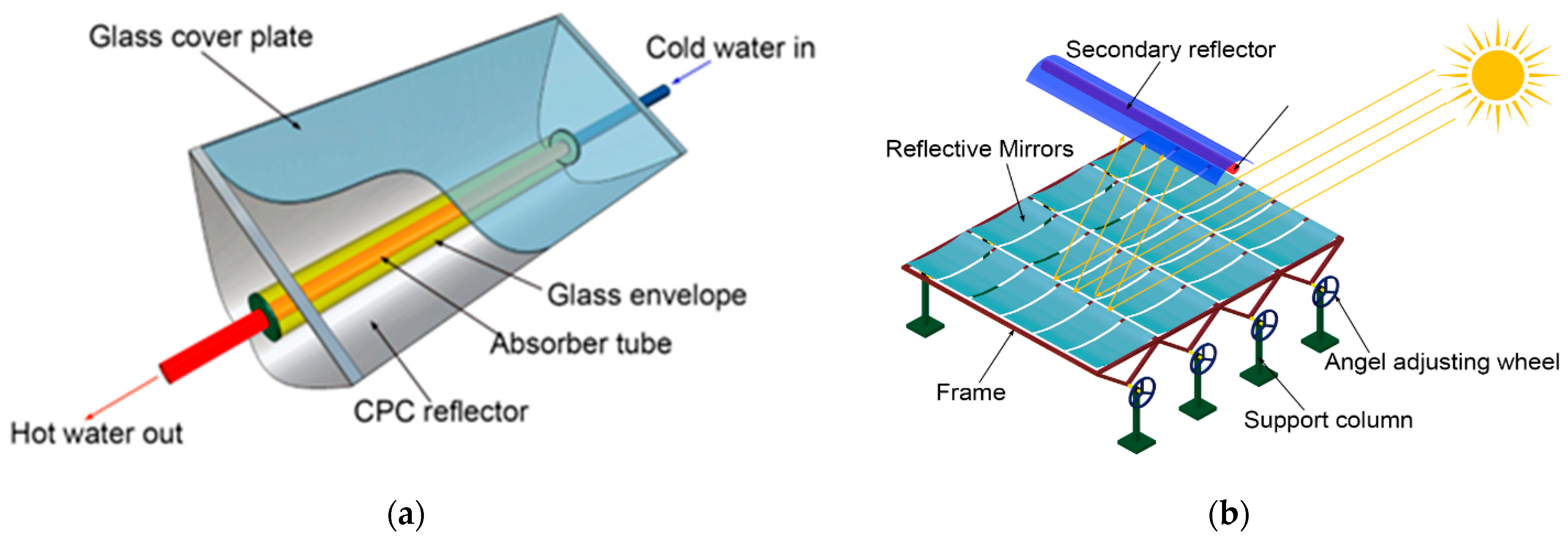
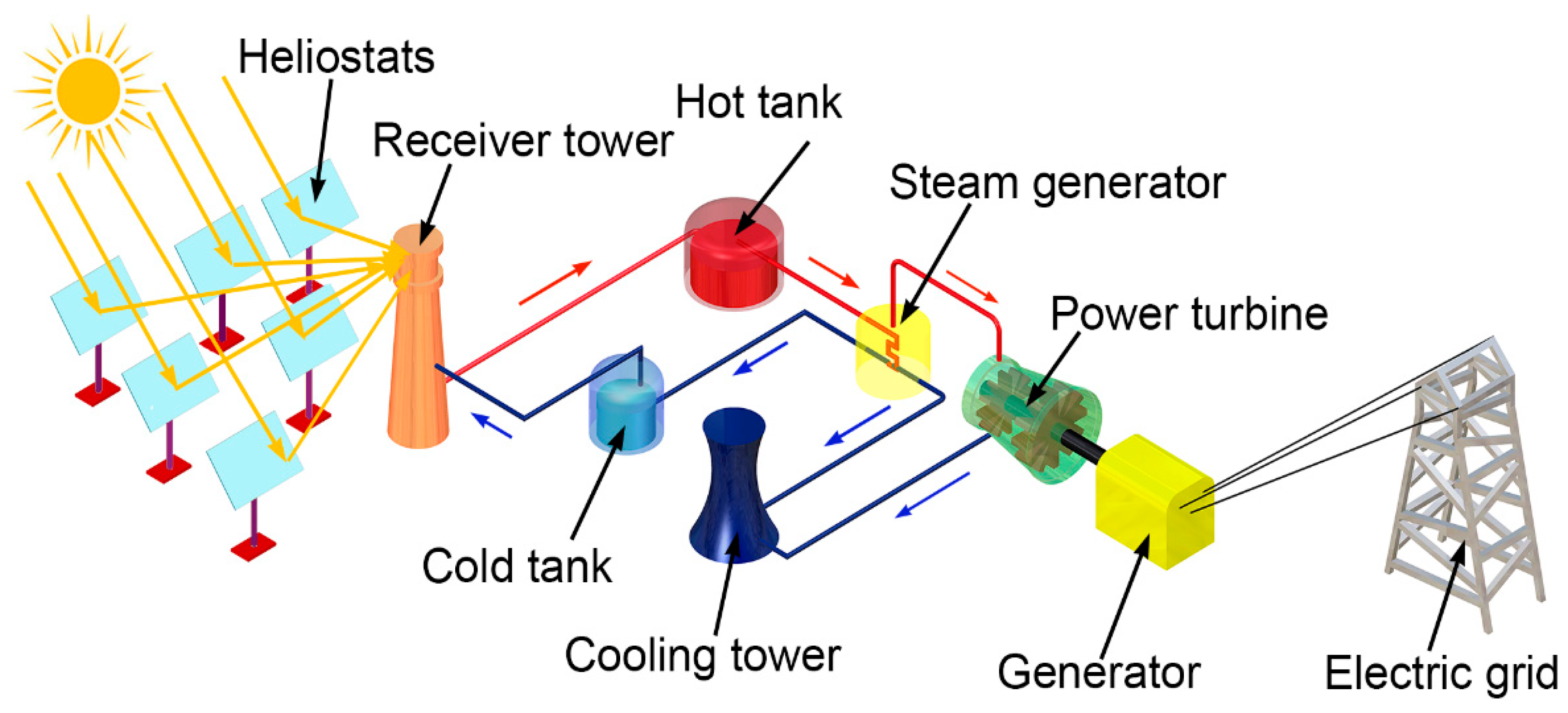
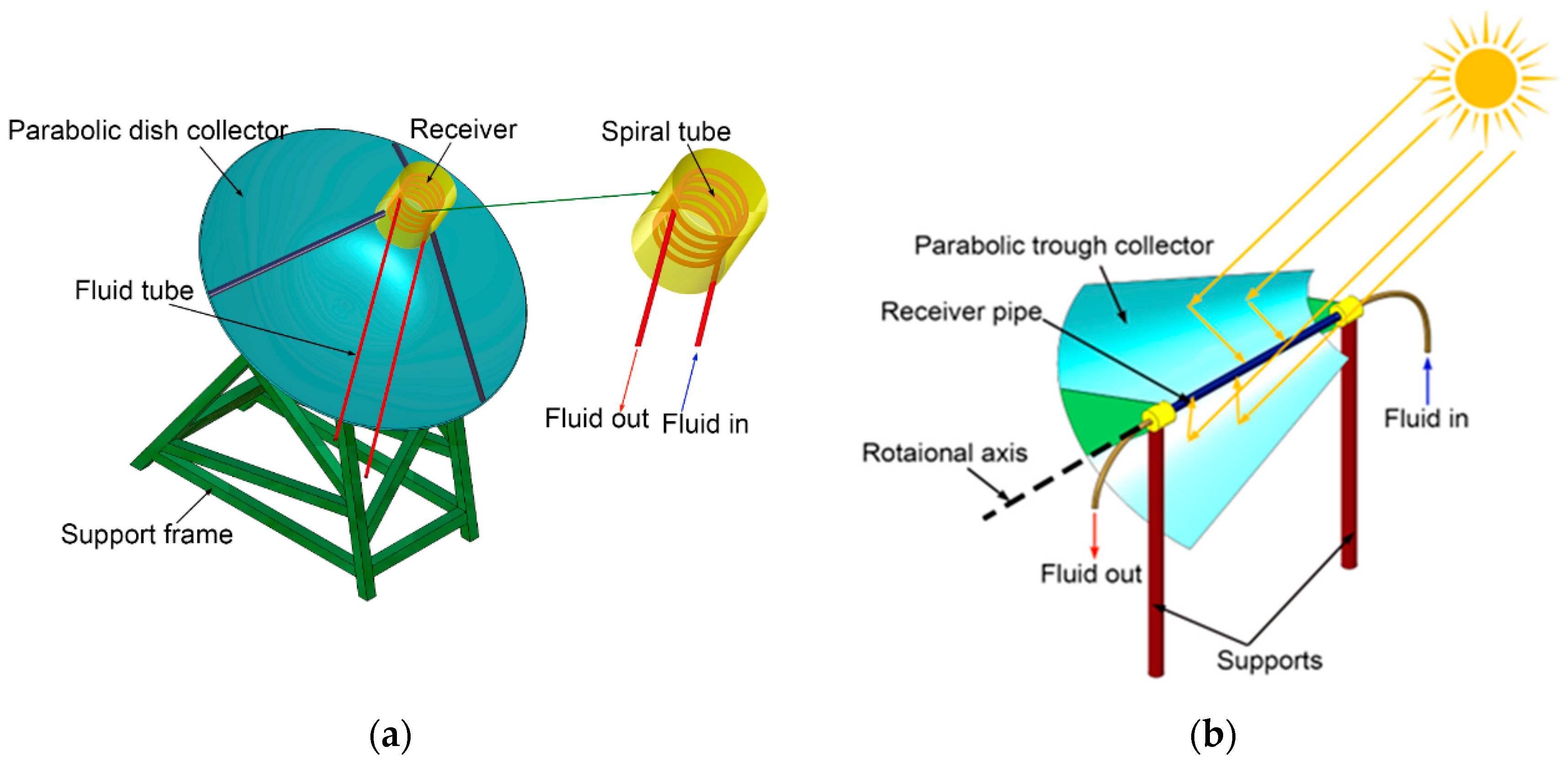
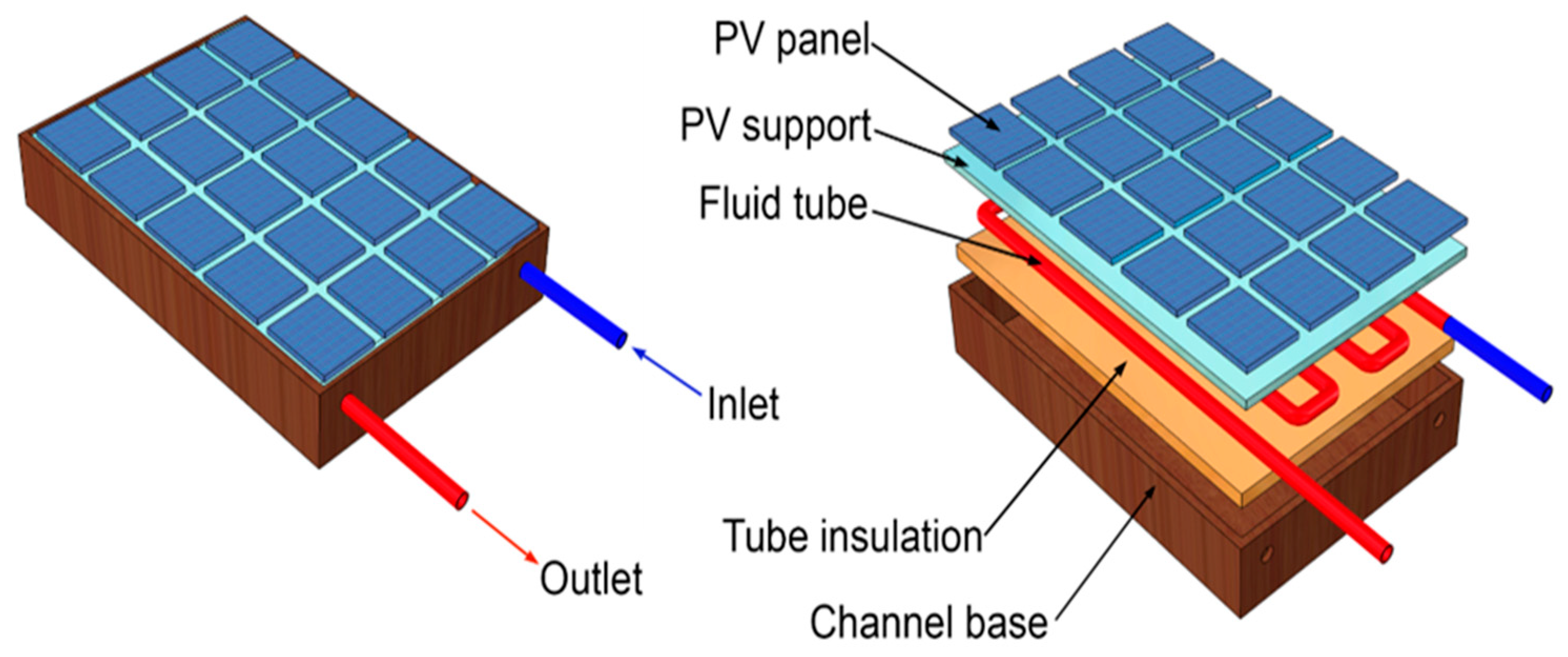
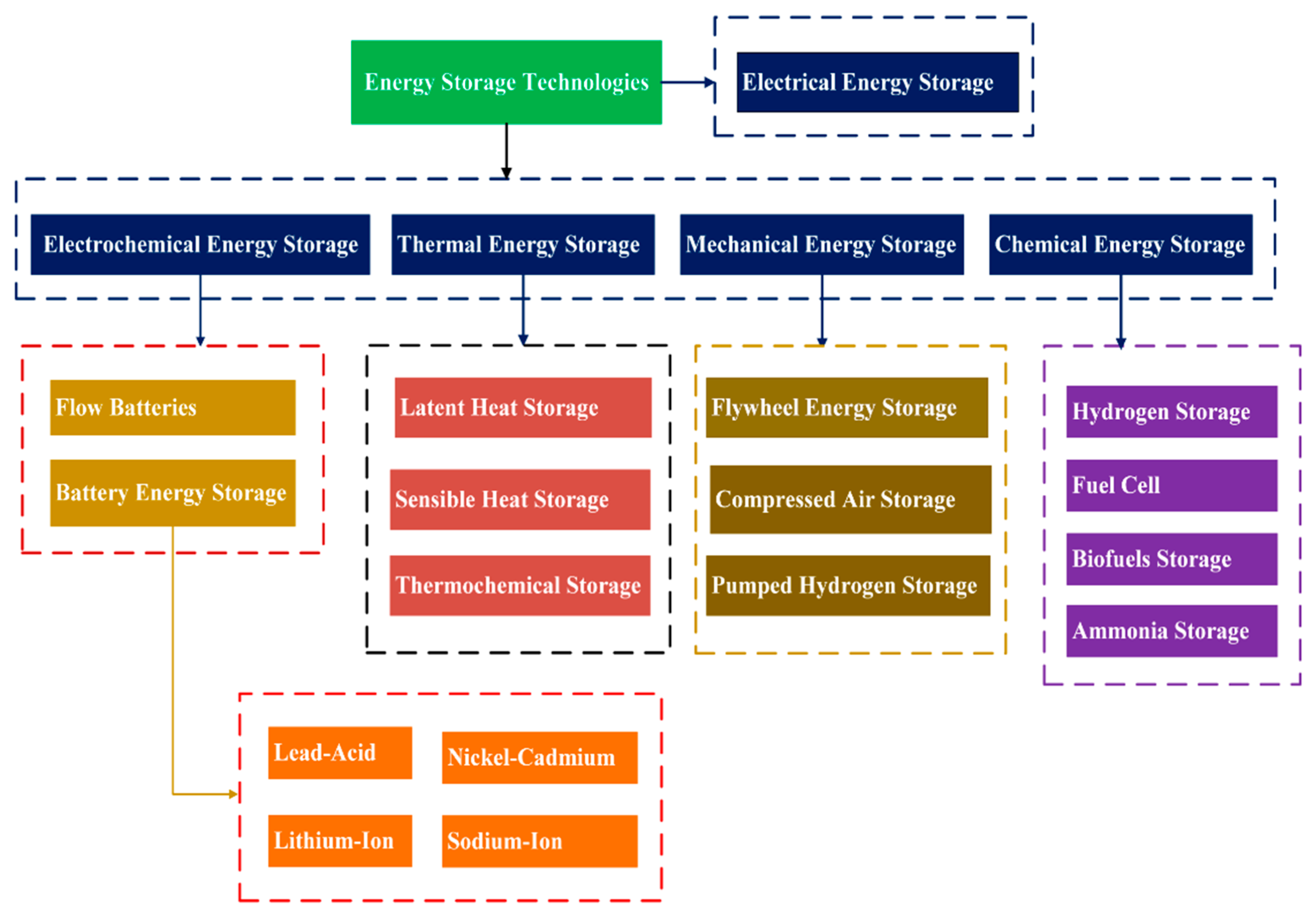
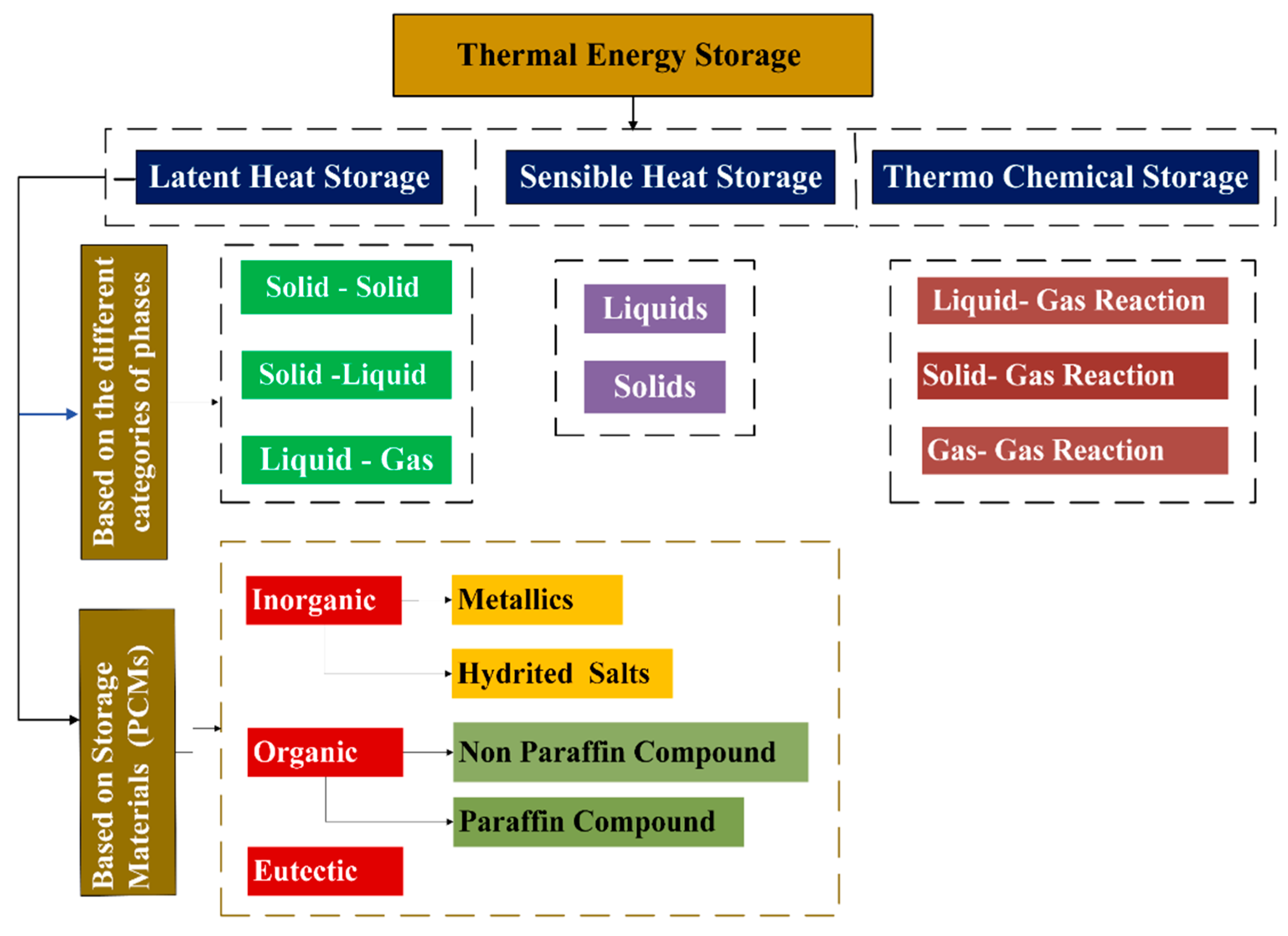
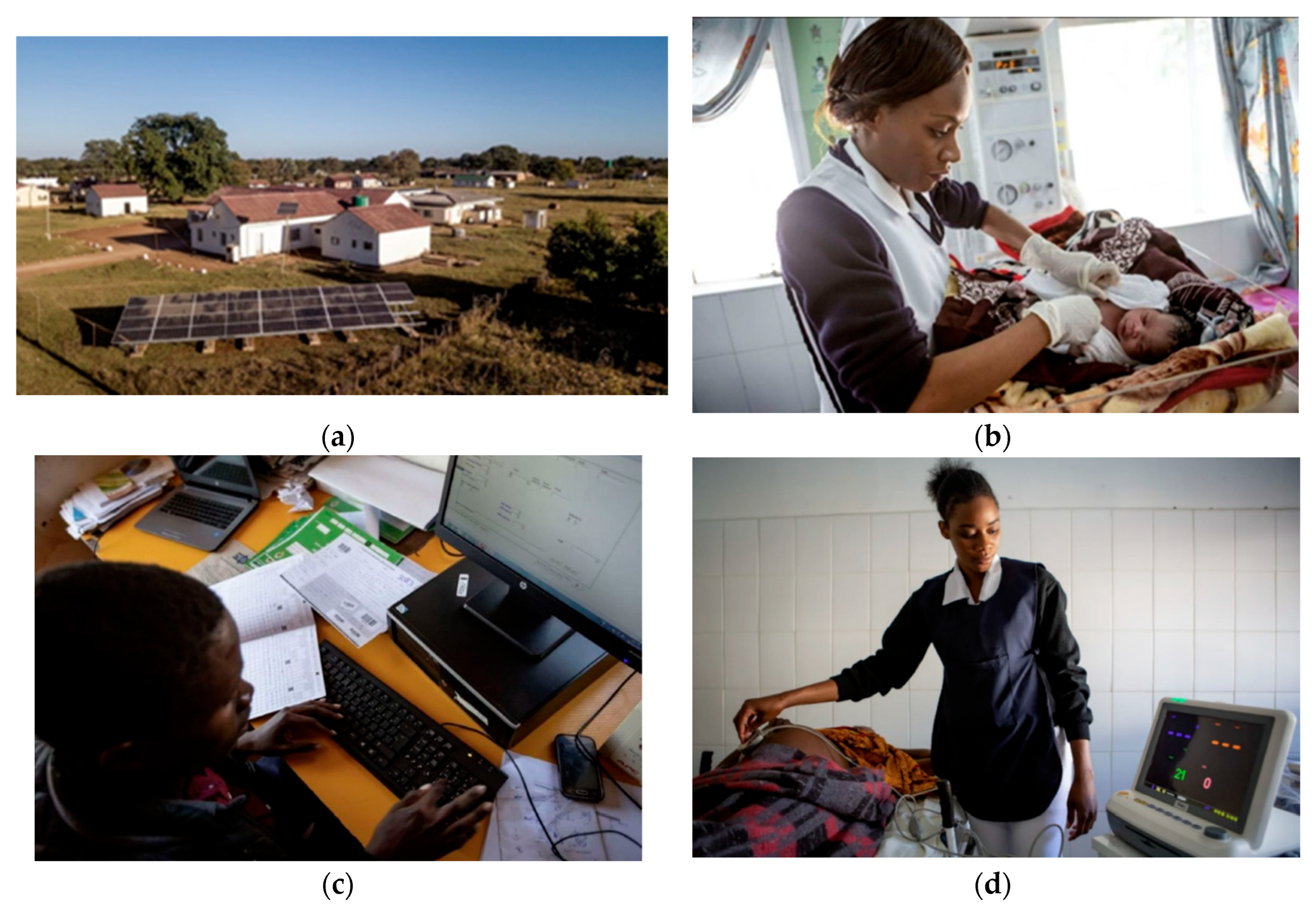
| Ref. | Objectives | Country | Remarks |
|---|---|---|---|
| [18] | Perspectives on solar PV system adoption in sub-Saharan Africa. | Malawi | Individuals have installed solar PV systems without adequate training, resulting in unsafe installations. This is a significant challenge in deploying solar energy in rural areas, where insufficient knowledge and training can endanger both the users and the systems. |
| [19] | Examine the factors affecting households’ adoption of solar PV energy. | Uganda | The household head’s income, acquisition method, and repayment terms positively affect the willingness to adopt solar energy for business use. Financial disclosure affects only the willingness to embrace solar energy. |
| [20] | Assess the public’s understanding, knowledge, and attitudes toward solar technology. | Bangladesh | The study highlighted the need for collaboration among stakeholders to increase awareness and address adoption barriers such as cost and availability. This matched the challenges of deploying solar energy in rural areas, where limited awareness hindered adoption. |
| [21] | Addressing energy poverty: using climate finance to tackle the energy trilemma. | Indonesia | Transitioning to renewable energy sources is crucial but requires a substantial financial investment. |
| [22] | Develop a sustainable model to enhance the adoption of solar PV technology. | Tanzania | Limited financial access, insufficient enforcement of policies and regulations, technical constraints, low awareness, and the significant expense of solar PV systems poses a major challenge to their widespread adoption. |
| [23] | Techno-economic assessment of a standalone photovoltaic–diesel hybrid system. | Malaysia | It has a superior cost-effectiveness relative to traditional generator-based systems, decreased reliance on diesel, and improved electricity provision for rural communities. |
| [24] | Evaluate the readiness and challenges Malaysians face in adopting solar energy. | Malaysia | Major obstacles in implementing solar energy in rural areas include high upfront costs, limited public awareness, and efficiency that is dependent on weather conditions. |
| [25] | A techno-economic evaluation of off-grid solar PV systems. | Pakistan | Assessed the potential and economic feasibility of these systems for rural electrification, emphasizing the practical benefits of solar energy solutions. |
| [26] | Evaluate farmers’ awareness and the factors influencing their adoption of solar-powered pumps. | - | The study found that perceived benefits and government incentives encourage using solar-powered pumps, while high costs and limited subsidy awareness deter adoption. |
| [27] | Evaluated the potential and analyzed solar PV energy systems. | Ethiopia | Solar energy potential of 5.52 kWh/m2 daily. The estimated daily electric loads are 313 Watt-hour (Wh) for a household, 2064 Wh for a school, and 2040 Wh for a clinic, with corresponding energy costs of 1.20 USD/kWh, 0.92 USD/kWh, and 0.87 USD/kWh, respectively. Long-term advantages and lower installation expenses compared to extending the national grid. |
| [28] | The review highlighted the potential of PV systems for providing decentralized electricity access. | Mozambique | Despite Africa’s abundant solar resources, renewable energy accounts for only a small fraction of its total energy supply. Challenges such as high costs, insufficient infrastructure, and dependence on traditional energy sources like biomass for cooking underscore the difficulties in implementing solar energy in rural Africa. |
| [29] | Harnessing solar energy is crucial for addressing energy poverty in rural regions. | Pakistan | Energy poverty in rural areas subjects residents to various security risks, such as health hazards, fire accidents, time and financial constraints, illiteracy, and additional challenges. It underscored the necessity for policy recommendations directed at both the public and private sectors to address energy barriers, with a specific focus on implementing solar energy solutions in rural healthcare settings. |
| [30] | Developing a sustainable solar vaccine cold chain and vaccination program aims to promote clean energy in primary healthcare in Lebanon. | Lebanon | Solarizing Primary Health Care Centers (PHCCs) in Lebanon enhanced vaccine preservation and strengthened the resilience of health services. More than 1000 solar direct drive units were deployed across over 800 health facilities. Solarizing PHCCs improved vaccine preservation and boosted overall health service resilience. Challenges included geographic and structural limitations, as well as economic factors. |
| [31] | Energy status in Africa: challenges, advances, and sustainable solutions. | Sub-Saharan Africa | Rural electrification in sub-Saharan Africa struggles with limited modern energy access, dependence on non-eco-friendly sources, and inadequate infrastructure. Off-grid solutions, including solar mini-grids and home systems, can address these challenges, highlighting the need for effective policies, funding, and technology to optimize renewable energy in rural areas. |
| [32] | The political economy analysis of obstacles to rural electrification. | Tanzania | Institutional barriers to rural electrification in Tanzania demonstrate how political and regulatory factors can obstruct effective project implementation. Primary and secondary data identify key obstacles, such as non-independent institutions, policy gaps, and difficulties for governing bodies. A key challenge is the lack of political will and commitment, which impedes the implementation of large-scale solar power projects in rural areas. |
| [33] | Impact of solar lighting and electricity on maternity care quality and timeliness. | Uganda | Universal access to modern energy and the assurance of safe childbirth are vital global health priorities, but there is a lack of comprehensive research on their adoption and impact. Reliable lighting is essential for timely and effective healthcare, as it may improve providers’ ability to promptly address and mitigate the risk of postpartum hemorrhage. The intervention was well-adopted, improved facility lighting, and modestly enhanced maternal care during deliveries. |
| Tracking | Type of Collector | Absorber Type | Temperature Range (°C) | Collector Ratio |
|---|---|---|---|---|
| Stationary | Flat plate collector | Flat | 30 to 80 | 1 |
| Evacuated tube collector | Flat | 50 to 200 | 1 | |
| Compound parabolic | Tubular | 60 to 240 | 1 to 5 | |
| One-axis | Fresnel lens | Tubular | 60 to 250 | 10 to 40 |
| Parabolic trough | 60 to 300 | 15 to 45 | ||
| Cylindrical trough | 60 to 300 | 10 to 50 | ||
| Two-axis | Parabolic dish reflector | Point | 100 to 500 | 150 to 1500 |
| Heliostat field collector | 150 to 2000 | 100 to 1000 |
| Factors | Lead–Acid Battery | Lithium-ion Battery | Flow Battery |
|---|---|---|---|
| Performance (%) | 75–80 | 80–86 | 60–70 |
| Energy per unit mass (Wh/kg) | 50–100 | 200–350 | 20–70 |
| Specific power (W/kg) | 10–500 | 100–350 | - |
| Self-discharge rate (%) | 0.1 to 0.4 daily | 5 monthly | 0.1 to 0.4 daily |
| Depth of discharge (%) | 70 | Up to 100 | 100 |
| Installation power cost (EUR/kW) | 150–200 | 150–200 | 1000–1500 |
| Service life | 500 to 2000 | 1000–5000 cycles | More than 10,000 |
| Installation energy cost (EUR/kW) | 100–250 | 3000–800 | 300–500 |
| Service life (years) | 5–15 | 5–20 | 10–15 |
Disclaimer/Publisher’s Note: The statements, opinions and data contained in all publications are solely those of the individual author(s) and contributor(s) and not of MDPI and/or the editor(s). MDPI and/or the editor(s) disclaim responsibility for any injury to people or property resulting from any ideas, methods, instructions or products referred to in the content. |
© 2025 by the authors. Licensee MDPI, Basel, Switzerland. This article is an open access article distributed under the terms and conditions of the Creative Commons Attribution (CC BY) license (https://creativecommons.org/licenses/by/4.0/).
Share and Cite
Teklemariam, S.K.; Schiasselloni, R.; Cattani, L.; Bozzoli, F. Solar Energy Solutions for Healthcare in Rural Areas of Developing Countries: Technologies, Challenges, and Opportunities. Energies 2025, 18, 3908. https://doi.org/10.3390/en18153908
Teklemariam SK, Schiasselloni R, Cattani L, Bozzoli F. Solar Energy Solutions for Healthcare in Rural Areas of Developing Countries: Technologies, Challenges, and Opportunities. Energies. 2025; 18(15):3908. https://doi.org/10.3390/en18153908
Chicago/Turabian StyleTeklemariam, Surafel Kifle, Rachele Schiasselloni, Luca Cattani, and Fabio Bozzoli. 2025. "Solar Energy Solutions for Healthcare in Rural Areas of Developing Countries: Technologies, Challenges, and Opportunities" Energies 18, no. 15: 3908. https://doi.org/10.3390/en18153908
APA StyleTeklemariam, S. K., Schiasselloni, R., Cattani, L., & Bozzoli, F. (2025). Solar Energy Solutions for Healthcare in Rural Areas of Developing Countries: Technologies, Challenges, and Opportunities. Energies, 18(15), 3908. https://doi.org/10.3390/en18153908







